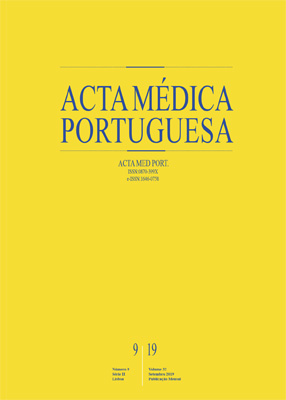Isolated Non-16/18 High-Risk Human Papillomavirus Cervical Infection: Re-Evaluation After One Year
DOI:
https://doi.org/10.20344/amp.10183Keywords:
Genetic Variation, Papillomaviridae, Papillomavirus Infections, Precancerous Conditions, Uterine Cervical NeoplasmsAbstract
Introduction: High-risk human papillomavirus cervical infection is currently a well-established cause of cervical cancer. However, only a few women with persistent infections will develop cervical precancerous and malignant lesions. Approximately 20% of all cervical cancers are attributable to non-16/18 serotypes. This study aims to evaluate the results of our clinical approach to women with this infection.
Material and Methods: We conducted an observational and prospective study from September 2012 to September 2017, which included women with isolated non-16/18 high-risk human papillomavirus infection (with normal cytology). After re-evaluation, two groups were compared: women with spontaneous regression of the infection and women with persistent infection. Clinical and demographic data were analysed as well as the rate of progression to precancerous and malignant lesions.
Results: We included 165 women, of which 121 were re-evaluated with co-test at least one year later. After re-evaluation, 13.2% of women revealed precancerous lesions but only two (1.7%) of them presented high-grade squamous intraepithelial lesions. Sixty-seven women (55.4%) showed spontaneous regression of the infection and 54 women (44.6%) maintained it. Women with persistent infection developed more precancerous lesions (27.8%; p < 0.001) and high-grade squamous intraepithelial lesions (3.7%; p < 0.001). There was also an association between persistent infection and postmenopausal status.
Discussion: Human papillomavirus 16/18 cervical infection is associated with higher risk of cervical cancer when compared with other serotypes.
Conclusion: Re-evaluation with co-test one year after the diagnosis of isolated non-16/18 human papillomavirus infection seems to be a reasonable approach.
Downloads
Downloads
Published
How to Cite
Issue
Section
License
All the articles published in the AMP are open access and comply with the requirements of funding agencies or academic institutions. The AMP is governed by the terms of the Creative Commons ‘Attribution – Non-Commercial Use - (CC-BY-NC)’ license, regarding the use by third parties.
It is the author’s responsibility to obtain approval for the reproduction of figures, tables, etc. from other publications.
Upon acceptance of an article for publication, the authors will be asked to complete the ICMJE “Copyright Liability and Copyright Sharing Statement “(http://www.actamedicaportuguesa.com/info/AMP-NormasPublicacao.pdf) and the “Declaration of Potential Conflicts of Interest” (http:// www.icmje.org/conflicts-of-interest). An e-mail will be sent to the corresponding author to acknowledge receipt of the manuscript.
After publication, the authors are authorised to make their articles available in repositories of their institutions of origin, as long as they always mention where they were published and according to the Creative Commons license.









